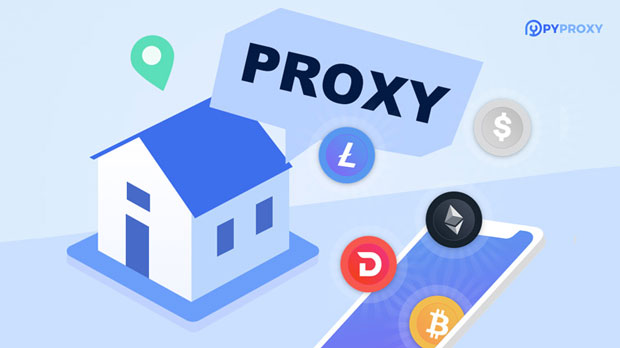In today's digital landscape, online privacy and security are growing concerns, prompting many users to turn to proxies for protection and anonymity. Among the various proxy protocols available, SOCKS5 has gained significant attention for its superior performance, especially in terms of speed. But what makes SOCKS5 faster than regular proxies? The difference lies in the way the protocols handle data, security, and communication with servers. By understanding the technical aspects of these proxies, we can gain a clearer perspective on why SOCKS5 is often the preferred choice for high-speed internet activities, such as gaming, streaming, and data scraping. 1. Protocol Design: SOCKS5 vs. Regular ProxiesSOCKS5 is an upgraded version of the original SOCKS protocol, designed to offer enhanced performance and flexibility compared to older proxy protocols like SOCKS4 or HTTP proxies. The key to its speed lies in its protocol design, which allows it to handle a wide variety of traffic types with minimal interference. Unlike HTTP proxies, which can only handle HTTP/HTTPS traffic, SOCKS5 supports a broader spectrum of protocols, including FTP, SMTP, and POP3. This makes SOCKS5 more versatile, enabling it to handle a larger range of data efficiently.Regular proxies, such as HTTP or HTTPS proxies, typically focus on web browsing and are optimized for specific traffic. However, these proxies often perform slower because they inspect and filter data at higher levels of the OSI model. This filtering process can introduce latency, especially when dealing with non-HTTP traffic. In contrast, SOCKS5 operates at a lower level in the OSI model, handling traffic with fewer processing steps, leading to reduced delays and faster performance.2. Minimal Latency in socks5 proxy CommunicationOne of the key reasons socks5 proxies outperform regular proxies in terms of speed is their minimal latency during communication. SOCKS5 proxies simply route traffic through a server without inspecting or altering the data, which results in less processing time. This streamlined approach allows for faster connection times, particularly for data-heavy applications like video streaming, large file downloads, or online gaming.In contrast, regular proxies, particularly HTTP proxies, tend to add extra layers of processing by analyzing and filtering the data at multiple stages. These proxies often have to decode and modify the content of web pages or requests to ensure proper routing, which can introduce significant delays. The additional overhead involved in such operations leads to slower speeds, especially in time-sensitive applications like online gaming or real-time communication.3. Reduced Data Overhead with SOCKS5SOCKS5 proxies have a lower overhead compared to regular proxies. Regular proxies often add headers and extra data to requests in order to maintain session integrity, monitor traffic, or provide additional security features. These added data packets consume bandwidth and increase the overall size of the communication, which can slow down data transfer speeds.SOCKS5, on the other hand, has a simpler data structure, meaning it requires fewer resources to process and transmit information. This reduction in overhead translates into faster speeds for users, particularly in situations where large volumes of data need to be transferred quickly, such as in file sharing or downloading large video files.4. Better Handling of Connection Types in SOCKS5Another factor contributing to the faster speeds of SOCKS5 proxies is their ability to handle a wider range of connection types without compromising performance. SOCKS5 is capable of working with UDP (User Datagram Protocol) in addition to the more commonly used TCP (Transmission Control Protocol). This flexibility allows SOCKS5 proxies to be particularly effective for high-speed applications like gaming or video streaming, where low-latency, real-time communication is crucial.Regular proxies, especially those using HTTP or HTTPS, are typically limited to TCP connections. While TCP is reliable and ensures data integrity, it can be slower due to its error-checking mechanisms and retransmission protocols. UDP, on the other hand, is faster because it does not require these additional checks, making it ideal for applications that prioritize speed over complete accuracy, such as live-streaming or online gaming.5. Authentication and Encryption in SOCKS5One of the reasons that regular proxies might experience slower speeds is due to the extra layers of authentication and encryption they often use. While encryption is critical for maintaining security and privacy, it can also add significant overhead. HTTP proxies, for example, frequently rely on SSL/TLS encryption to secure data transmission, which can slow down connections due to the time required to establish and manage secure channels.SOCKS5 proxies support flexible authentication methods, including password-based or no authentication at all. This provides the user with the option to forgo encryption for the sake of performance if security is not a primary concern. Even when encryption is used, SOCKS5 generally experiences less overhead than protocols like HTTPS, making it a faster alternative for users who require both speed and security.6. SOCKS5’s Impact on Bandwidth EfficiencyBandwidth efficiency is another factor that contributes to the superior speed of SOCKS5 proxies. Because SOCKS5 uses a simpler approach to routing traffic and avoids unnecessary data processing, it consumes less bandwidth than regular proxies. The reduced data load allows for faster transmission speeds, particularly for users who need to transfer large amounts of data in a short period.For instance, when downloading files, using a SOCKS5 proxy can result in faster download speeds because the proxy does not add significant overhead. Regular proxies, however, may reduce bandwidth efficiency due to the need for extra processing, leading to slower download speeds.7. Ideal Use Cases for SOCKS5 ProxiesGiven the numerous advantages that SOCKS5 proxies offer in terms of speed, it is no surprise that they are widely used for high-performance tasks. These include:- Online Gaming: For real-time gaming, SOCKS5 proxies provide a low-latency connection, minimizing delays and ensuring smoother gameplay.- Streaming Services: For users looking to access geo-restricted content, SOCKS5 proxies enable faster streaming by offering a stable connection with minimal buffering.- Web Scraping: When extracting large volumes of data from websites, SOCKS5 proxies allow for faster scraping with less risk of detection or throttling.- Large File Downloads: SOCKS5's bandwidth efficiency and reduced overhead make it ideal for downloading large files quickly and reliably.ConclusionIn summary, the speed advantages of SOCKS5 proxies over regular proxies can be attributed to their streamlined design, minimal latency, reduced overhead, and ability to handle a variety of connection types efficiently. By operating at a lower layer of the OSI model, avoiding excessive data filtering, and supporting both TCP and UDP protocols, SOCKS5 proxies offer a faster, more efficient solution for high-speed internet activities. Whether for gaming, streaming, or data scraping, SOCKS5 proxies provide the performance necessary for seamless online experiences.
Jan 10, 2025






















































